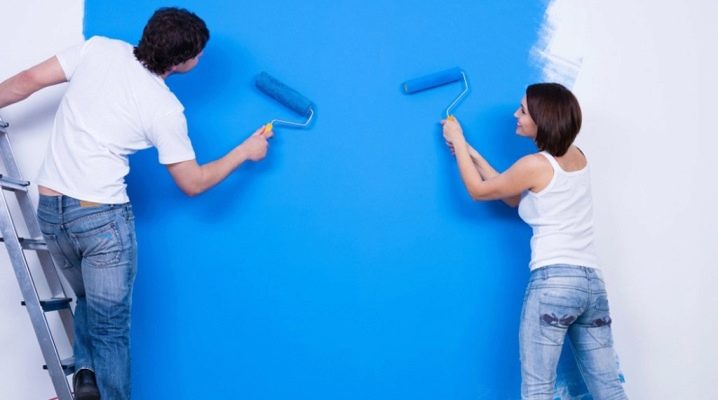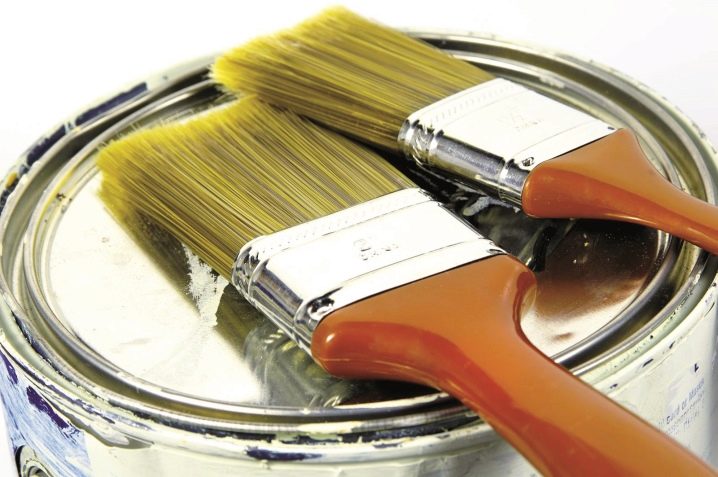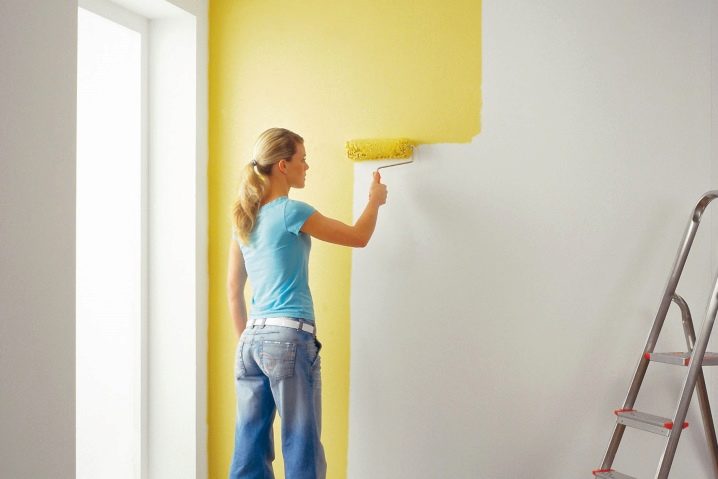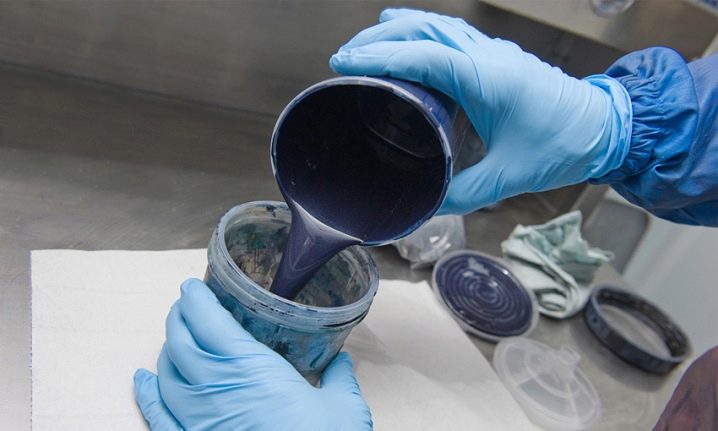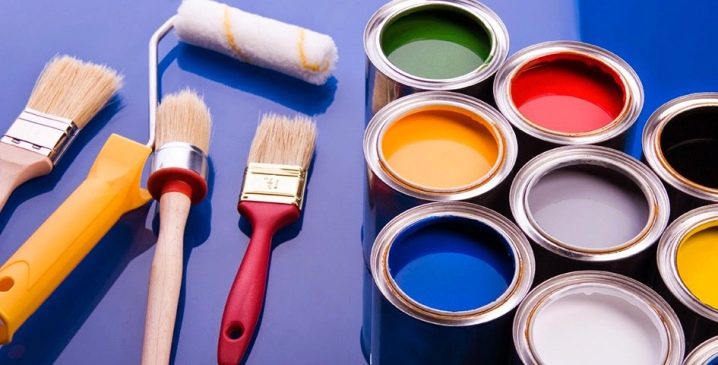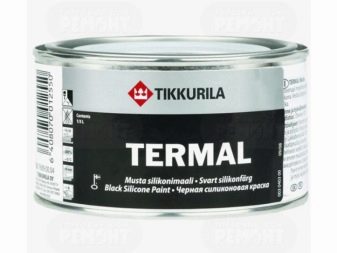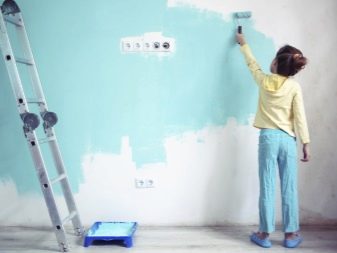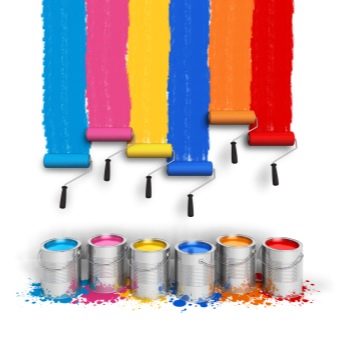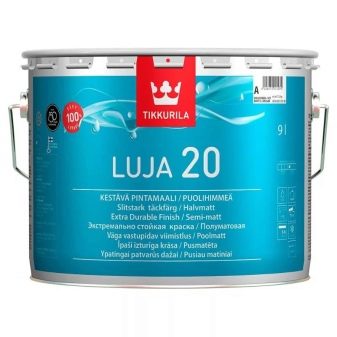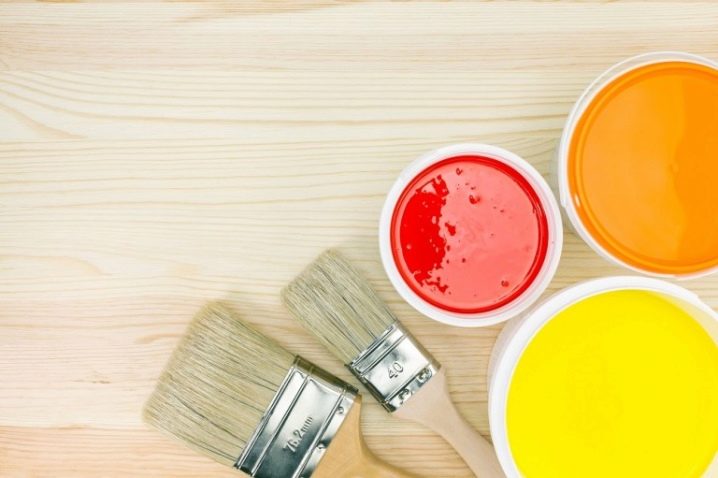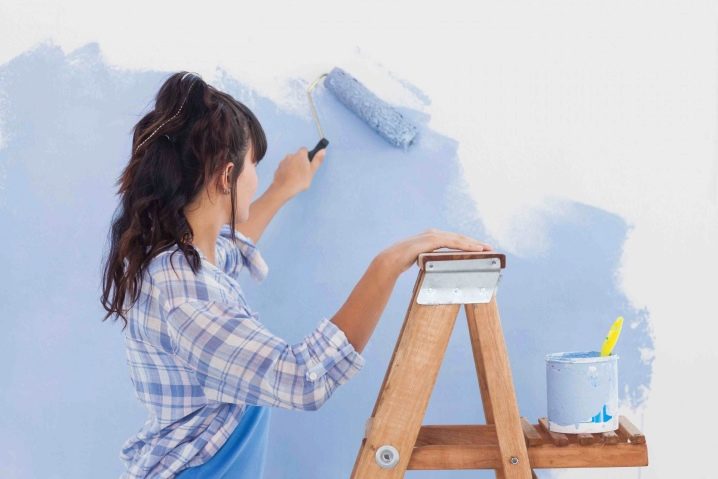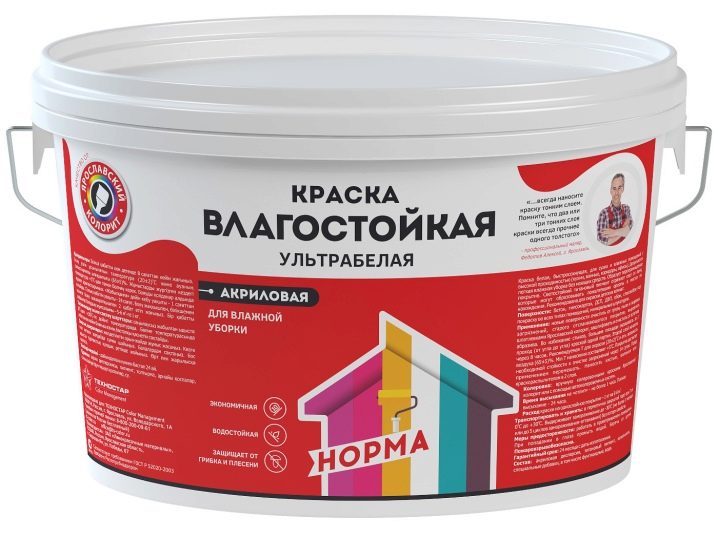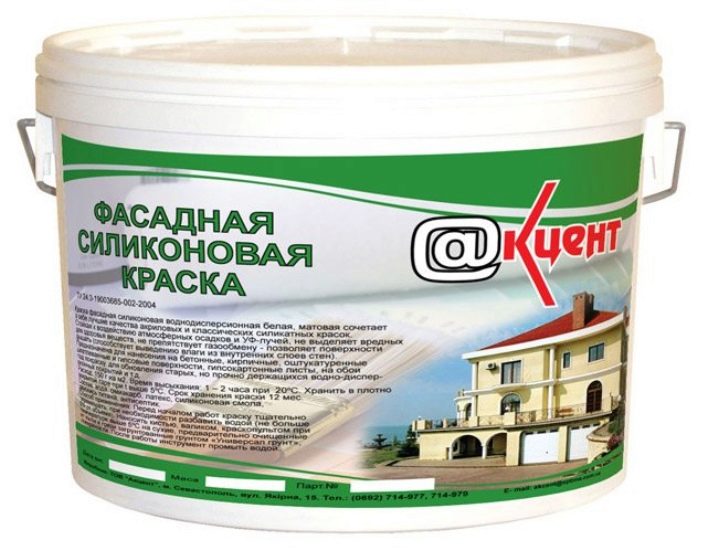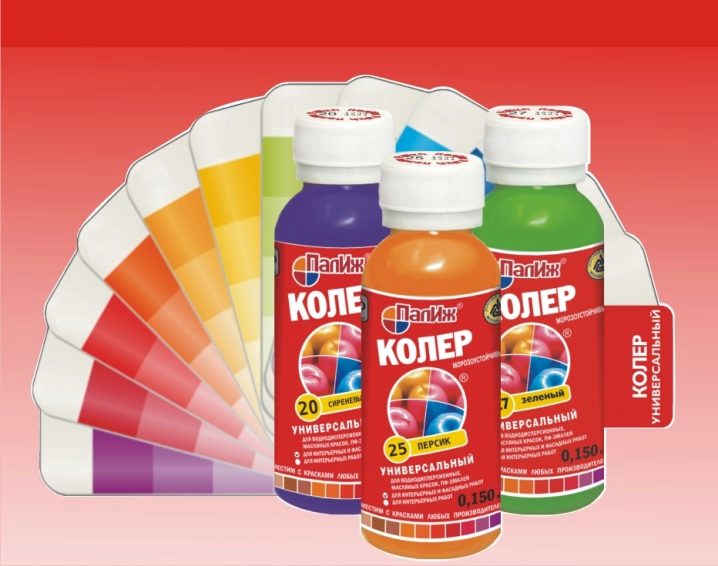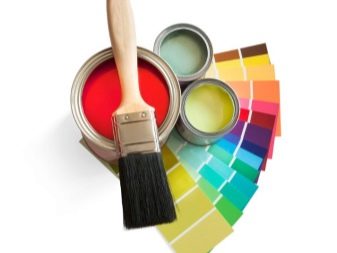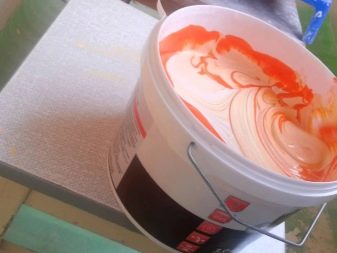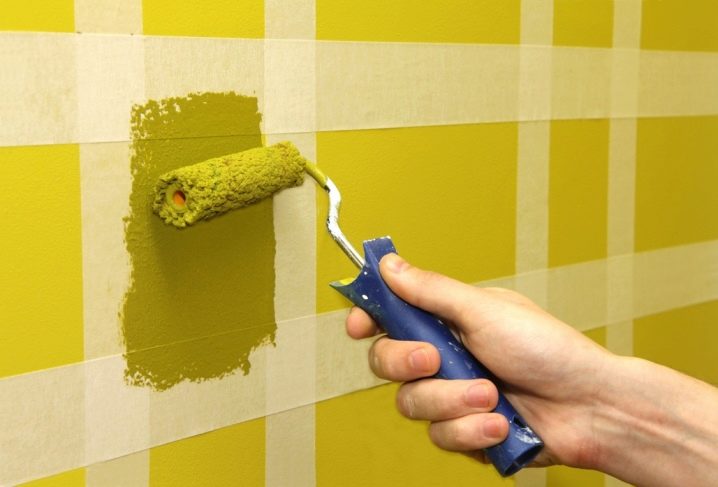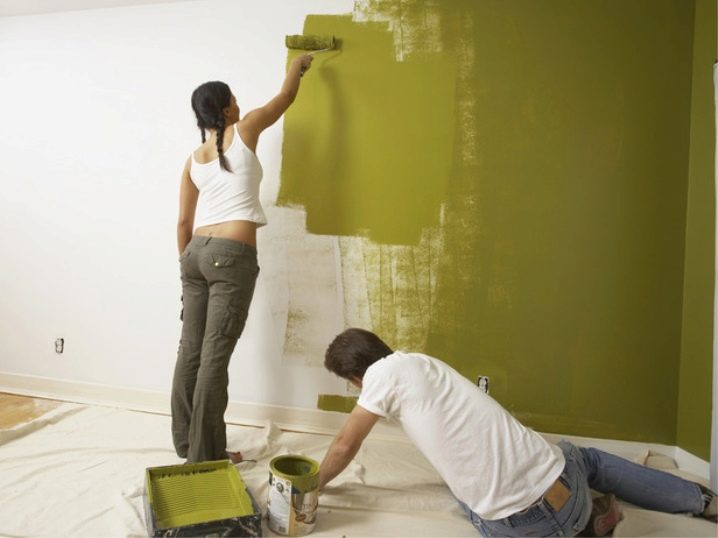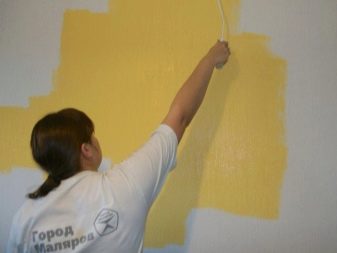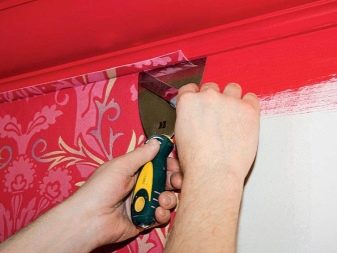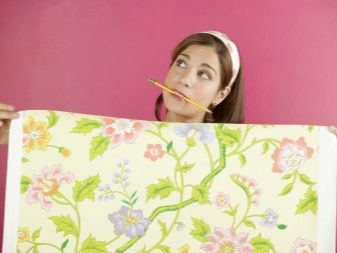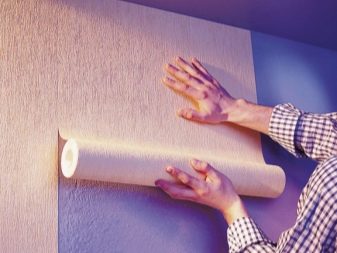Waterproof water-based paint: features of choice
Everyone at least once in his life faced with repair work, and there was always a question about the choice of material and tools, because there is a huge selection of paint mixtures. Today the most common is water-based paint. It is intended for finishing various surfaces. Let's get acquainted closer with this paint and varnish structure.
Specifications
The basis for water-based paint is water and particles of polymeric substances. The type of mixture depends on their quantity and properties.
Additional elements may also be present to improve the useful characteristics of the material.
Before buying paint, be sure to pay attention to its composition, consumption, viscosity and storage conditions.
From the incoming components depends on where and how you can apply the water emulsion:
- Viscosity is the ability to dilute paint with water. It is measured using a viscometer.
- Paint consumption depends on the viscosity of the material and method of application. When using a brush, it is 40-45%, and when using a spray gun - 20-25%. On average, the consumption of this material is small - 250 g per 1 sq. M.
- The total drying time is about 20 hours, and sometimes less (depending on temperature and humidity). Store a jar of paint preferably in a cool place.
Benefits
Water emulsion has become popular due to its properties.
- It is an eco-friendly and safe material that does not have a strong odor.
- In addition, this paint is harmless to the body.
- It is easily removed from various tools and surfaces with a soap solution.
- The advantage of waterproof paint is its quick drying. It takes about 2 hours, after which you can apply the next layer. Of course, the drying rate is directly dependent on the air temperature. The lower it is, the longer the composition dries.
- Large selection of colors.
- To obtain the desired color is enough to add a certain dye.
- It is easy to use, easy to lay on any surface.
- Such paint can mask small cracks on the surface.
- It is inexpensive.
disadvantages
There are practically no drawbacks to this paint. However, it can be used at a temperature not lower than +5 degrees. Another disadvantage lies in the fact that it contains a large amount of water, so it is not recommended to cover metal and glossy surfaces with such paint.
Species
There are two main types:
- Waterproof or moisture resistant.
- Heat resistant or silicate.
Heat resistant
There are several types of heat-resistant paints:
- For temperatures from 80-100 degrees Celsius, paint based on alkyd or acrylic components is used.
- For a temperature of 100-120 degrees, a material based on epoxy resin is used.
- For a temperature of 200-400 degrees, a paint based on ethyl silicate or epoxy resin is used.
- At a temperature of 400-600 degrees, paint and varnish products are used, which include special silicone resins.
The choice of paint depends on the work you want to do.as well as the degree of incandescence of the material. Heat-resistant compositions suitable for painting fireplaces, barbecues, radiators or stoves.
When purchasing these paints, carefully read the instructions for use.
Moisture resistant or water dispersion
This paintwork material is perfect for work both indoors and outdoors. It can be used for finishing in spaces with high humidity: in the bathroom or in the kitchen. It washes well, fits perfectly on any surface: plaster, brick, concrete, wood or drywall.
Depending on the composition, water-based paint is divided into several types:
- Mineral
- Silicate.
- Acrylic.
- Silicone.
Mineral
It contains cement and hydrated lime. This paint is used for any interior work with concrete and brick materials.
It is perfect for finishing different rooms, but due to its fragility it has recently lost its popularity.
Silicate
The structure includes liquid glass and colored pigments. Suitable for both indoor and outdoor use.Silicate paint is resistant to temperature extremes and moisture. It has a long service life (up to 20 years).
Acrylic
This paint is a leader in the construction market. It is in demand by both professionals and inexperienced craftsmen. Acrylic resins included in the mixture have a significant advantage over other types of paint and varnish mixtures.
Acrylic paint is used for walls and ceilings, as well as other types of work:
- Perfect for building facades made of concrete, brick, and plaster.
- Good for painting wood, metal, plastic and glass.
- Protects the surface from corrosion.
Sometimes there is latex in the composition. Thanks to this component, the paint resists moisture better. The painted base can be safely washed without fear that it will be washed off with water.
Acrylic paint with the addition of latex can close small cracks in the base. The layer should not exceed 1 mm. In this case, the period of its drying (at home temperature) will be several hours.
Silicone or latex
The main component of these paints is silicone. This version of the mixture will be indispensable for a damp room, as well as in rooms where systematic wet cleaning with the use of cleaning agents is necessary.Such opportunities are provided by latex in the paint.
Such paint is considered the most expensive because of its water-repellent and vapor permeable abilities. It can close small cracks in the base. This allows not to align the surface in advance.
Such paints have a good anti-fungal effect, which is necessary in damp rooms.
Color schemes
Aqueous emulsion paint is easily amenable to klerovlaniu. You can do it yourself. Many use this method in order to save, because the price of a white mixture is much lower, and there are much more possibilities when choosing a color.
You can achieve the desired shade by yourself:
- Calculate paint consumption as accurately as possible (with a small margin), since you will not be able to achieve the same color again.
- Add color to the composition in small portions, stirring constantly.
- If it seems to you that the desired shade is reached, do not rush to paint a large area. To begin with, test the composition in a small, inconspicuous area, and then wait until it is completely dry so that the color can show itself.
- After a satisfactory result, go to large volumes.
The choice of colors should be made very carefully. In small rooms it is better to use light shades, since such a palette visually expands the area.
If you paint the walls in dark colors, and the ceiling - in light, then the room will look narrow. This method is used with low ceilings. Do not use more than two colors in the same room.
It is better to combine shades, then the space will not look colorful.
Use roller
When using a brush, paint consumption increases. It is better to use it for work in hard-to-reach places, and for large areas it is worth buying a roller and a tray. Here it is also necessary to take into account the material of which the tool and fur coat are made.
For stucco and rough surface it is better to use a roller with a long pile, and a short fiber will be suitable for a smooth base. The tool should fit freely in the tray so that it is as convenient as possible to roll out the emulsion. Also, the roller should not be submerged in the solution by more than a quarter.
If the paint does not roll out well, you can dilute it with water, but not more than 10%, otherwise the composition will lose many of its properties.It is necessary to roll the mixture on the wall with the same pressure to avoid the appearance of strips and joints. The coating should be applied in several layers to avoid cracking.
Before painting the next layer, make sure that the first one is dry enough.
Wallpapering on water-based paint
This paint is considered a universal coating. It is combined with any materials. If there is a need to replace the finish - this is not a problem. Just clean the surface with a solution of glue and primer 1: 1. After the solution dries, you can safely glue the wallpaper.
For full credibility, it is permissible to test the coating after treatment. We glue the newspaper to a small area, wait for it to dry out, and then try to tear it from the wall.
If it doesn’t respond well, then everything is fine and you can continue to work.
Use on oil paint
Today in the shops are often found coating in the form of oil paint. Previously, such compositions were popular and used everywhere. Emulsion paint is incompatible with this coating, so it is better to remove the old finish.
Clean it in several ways:
- Mechanical.Remove paint with a spatula or emery paper.
- Chemical. Remove with solvents.
- Thermal. Cleaned by heating the surface. When the old paint is swollen, it can be removed from the base with a spatula.
Reviews
Consumers positively speak of water-based paints. Most buyers are pleased with the ease of their application, environmental friendliness and the absence of unpleasant odors.
It upsets people only that such compositions can not paint all bases because of the water base, as well as their incompatibility with some finishing materials, such as oil paint.
You will learn more about waterproof water-based paint in the following video.
